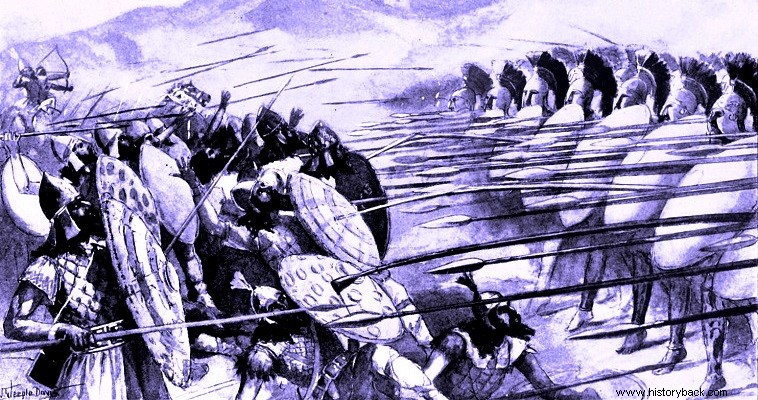
At the end of the 6th century BC. the East was under the scepter of the Great King of the Persians. The Persian Empire was the creation of a truly great man, Cyrus, who went from being a vassal king to the Medes to become the emperor of the East.
The Persians and the Medes were, despite their identification with the Greeks, different peoples, but of common origin. Cyrus took advantage of this fact and rebelled against the Median king Astyages, declaring that it was not a rebellion of vassals but of same-sex subjects.
The Medes were convinced and did not react. Thus Cyrus easily seized power by establishing a Persomedian state. Until its overthrow by Alexander, the nations of the Persians and the Medes were the pillars of the Persian Empire.
After the submission of the Medes, Cyrus turned against the other empires neighboring his state. At first they turned against the Lydians of the famous king Croesus. Cyrus with overwhelmingly superior forces, but also with the use of "secret" weapons (he used camels to scare the horses of the rival cavalry) defeated the famous Lydian cavalry and occupied the capital of the kingdom of Sardis.
Then the Median general of Cyrus Arpagos also occupied the Greek cities of Ionia. So in this conflict are the seeds of the Greco-Persian conflict.
Cyrus then conquered Babylon and Egypt, creating the largest empire the world had ever seen. But Cyrus himself was killed when he tried to subdue the enslaved Massagetae Scythians. He was succeeded by his paranoid son Cambyses, who almost destroyed the empire in its infancy.
Finally in 521 BC the noble general Darius took over the reins of the empire. But he had to fight against various claimants to the throne and against the rebelling Babylonians. Darius managed to defeat his opponents, but also the Babylonians. In Babylon he even crucified 3,000 men who were considered the leaders of the rebellion.
In 517 BC His vast empire stretched from the Ionian shores to the fringes of India. From the vassal countries untold treasures arrived every year at his capital, Susa. The eastern provinces paid a tax of 5,000 talents. Another 1,000 talents were sent by Babylon.
Egypt sent 700 talents and enough grain to feed 120,000 people. Armenia and Assyria sent the Great King 30,000 horse and Asia Minor 1,760 talents. Support of the absolute power of the King was his army.
In peacetime the army was small and limited to the royal guard of 10,000 Immortals and local garrisons. In times of war, however, the Persian king could mobilize enormous forces. Conscription was compulsory for every Persian and Mede, able to bear arms, male.
From the vassals the Persian emperor usually required the participation of military detachments of a certain strength. The army of the empire consisted of a panspermia of men, weapons and tactics. The hard core of the army was made up of the units of the Persians and the Medes. They were formed into units of 10, 100, 1000 and 10,000 men.
The Persians had adopted the Assyro-Babylonian standards and fought in mixed formations of satellites and archers - sparabaras. In each such formation the first yoke consisted of satellites armed with relatively short spears and large foot shields. All the other fighters, from the second to the 100th sometimes even, carried only spears and bows.
Not everyone was armed with a short manual, the "akinaki". As can be seen the Persian infantry fought more with the "use of fire", attempting to create a death zone in front of their front, than with movement and maneuver.
The huge Persian squares – 100-man front and 100-man deep divisions – were inherently slow-moving, with limited ability to maneuver tactically, but this did not bother the Persian leaders, who used cavalry exclusively as a weapon of maneuver, while infantry was limited in ground occupation missions.
The "national" sections of the vassals who fought alongside the Persians kept their customary way of fighting. The Persian cavalry was mostly unruly. It was distinguished into heavy and light. Regular cavalry formed part of the royal guard, but they were small in number.
The disorderly heavy cavalry was usually made up of nobles, much like the feudal knights of the Middle Ages. The light cavalry was on the whole disorderly and consisted of vassal divisions with a tradition of mounted acrobolism tactics.
The men of the Persian heavy cavalry were armed with two usually javelins and a sword. They did not carry a shield. But they brought breastplates, which they wore under their tunics. Instead of helmets they wore the traditional tiara.
